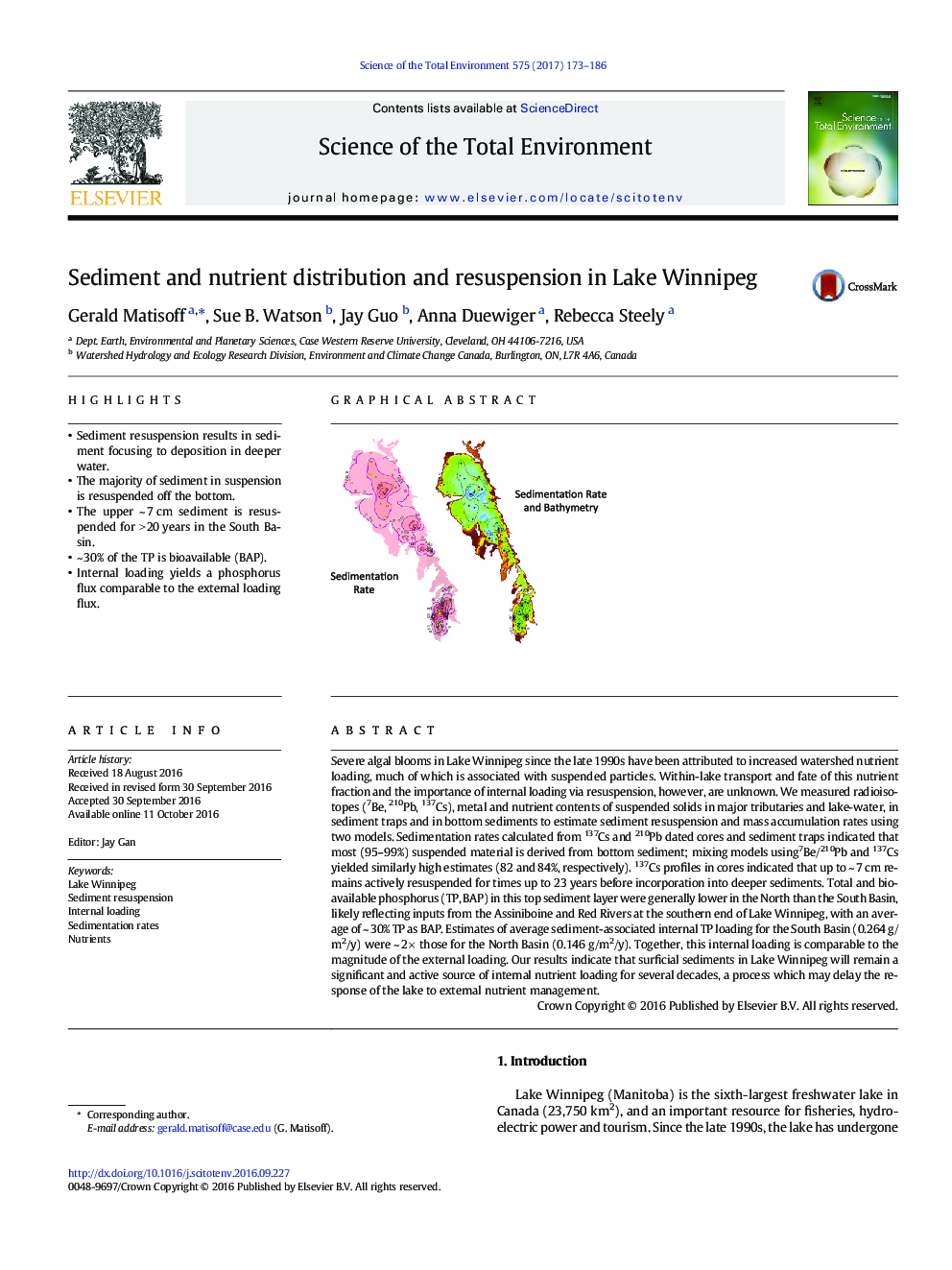| کد مقاله | کد نشریه | سال انتشار | مقاله انگلیسی | نسخه تمام متن |
|---|---|---|---|---|
| 6319422 | 1619716 | 2017 | 14 صفحه PDF | دانلود رایگان |
- Sediment resuspension results in sediment focusing to deposition in deeper water.
- The majority of sediment in suspension is resuspended off the bottom.
- The upper ~Â 7Â cm sediment is resuspended for >Â 20Â years in the South Basin.
- ~Â 30% of the TP is bioavailable (BAP).
- Internal loading yields a phosphorus flux comparable to the external loading flux.
Severe algal blooms in Lake Winnipeg since the late 1990s have been attributed to increased watershed nutrient loading, much of which is associated with suspended particles. Within-lake transport and fate of this nutrient fraction and the importance of internal loading via resuspension, however, are unknown. We measured radioisotopes (7Be, 210Pb, 137Cs), metal and nutrient contents of suspended solids in major tributaries and lake-water, in sediment traps and in bottom sediments to estimate sediment resuspension and mass accumulation rates using two models. Sedimentation rates calculated from 137Cs and 210Pb dated cores and sediment traps indicated that most (95-99%) suspended material is derived from bottom sediment; mixing models using7Be/210Pb and 137Cs yielded similarly high estimates (82 and 84%, respectively). 137Cs profiles in cores indicated that up to ~Â 7Â cm remains actively resuspended for times up to 23Â years before incorporation into deeper sediments. Total and bioavailable phosphorus (TP, BAP) in this top sediment layer were generally lower in the North than the South Basin, likely reflecting inputs from the Assiniboine and Red Rivers at the southern end of Lake Winnipeg, with an average of ~Â 30% TP as BAP. Estimates of average sediment-associated internal TP loading for the South Basin (0.264Â g/m2/y) were ~Â 2Â Ã those for the North Basin (0.146Â g/m2/y). Together, this internal loading is comparable to the magnitude of the external loading. Our results indicate that surficial sediments in Lake Winnipeg will remain a significant and active source of internal nutrient loading for several decades, a process which may delay the response of the lake to external nutrient management.
191
Journal: Science of The Total Environment - Volume 575, 1 January 2017, Pages 173-186
